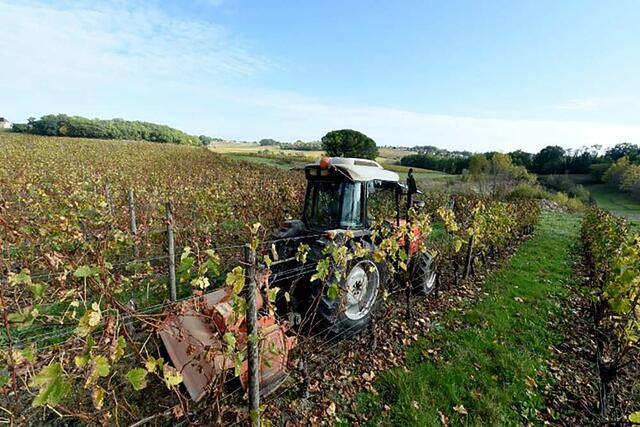
Controlling weeds autonomously? What more could you want!
Source: Alexandre Fournier-Level, University of Melbourne.
When it comes to controlling weeds in vineyards, less time weeding the vines could mean more time spent on the fun part – the wines! The Australian Wine Research Institute Limited recently undertook an exciting viticulture weed management project. Funded by the department under the Advancing Pest Animal and Weed Control Solutions competitive grant round, the project trialled autonomous equipment to provide more targeted, effective and efficient tools for weed control under vines, with minimal herbicide use. Standard mechanical techniques, such as tractor pass cultivation and mowing, can be expensive, intensive and slow. This project aims to automate alternative control measures by trialling two different automated systems.
In the first trial, an autonomy-kit was successfully fitted to a tractor, making it driverless for under-vine weeding trials. Human drivers recorded routes manually early in the first year, with subsequent trial runs using those recorded routes. The project also trialled a range of mechanical under-vine weeding tools. Some were inherently more suited to autonomy than others. Over time, advances led to better management of vineyard obstacles and machinery issues. The project also trialled different implements, like canopy sprayers, mulchers and slashers, including autonomous slashing for 12 hours without human intervention.
In the second part of the project, an autonomous robot performed under-vine weeding. Comparing the robot to a modified tractor highlighted that existing tractors are more robust and already highly suitable for weed control under vines.
The autonomous systems trialled operated primarily on satellite positioning (GPS and equivalents) with a local network correction source enabling real-time operation to improve the positioning accuracy to around 3 cm. The vehicle followed a programmed path with other sensors (LIDAR, bumpers, etc.) used as safety measures.
Source: Alexandre Fournier-Level, University of Melbourne.
Despite these successful trials, changes are required for sustained and safe operation of autonomous machinery in vineyards. For example:
- lifting irrigation lines to reduce the chance of under-vine weeding equipment snagging
- creating slightly larger headlands to facilitate comfortable turns, and
- better site segregation, fencing and signage to prevent contractors and visitors parking on autonomous vehicle routes.
Vineyard operators are communicating their learnings through presentations and demonstrations, including the 2022 Australian Wine Industry Technical Conference and demonstration days in the Barossa Valley.
The department funded this project under the Advancing Pest Animal and Weed Control Solutions competitive grant round, as part of the Established Pest Animal and Weeds Pipeline program. Nineteen research and development projects are being funded between 2021-2024 covering genomics, mechanical controls, robotics, novel toxins, and much more.
For more details about this and other projects, contact pestanimals&[email protected].


